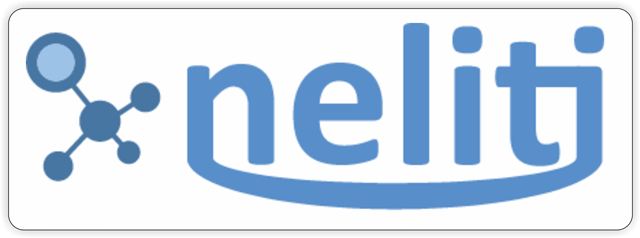Carakde Class Learning Program from the Sigi Community: Evaluation for Improving Student Learning Outcomes
(1) Universitas Negeri Yogyakarta
(2) Universitas Negeri Yogyakarta
(*) Corresponding Author
DOI: https://doi.org/10.26858/est.v8i1.35581
Abstract
Keywords
Full Text:
PDFReferences
Arifin, Zainal. (2013). Evaluasi Pembelajaran. Bandung: PT Remaja Rosdakarya.
Alexsandra1., Ganefri., & Usmedi. 2019. Evaluation of Vocational School Pratic Program CIPP Model. Journal. Journal of Educational Research and Evaluation Volume 3, Number 3 Tahun 2019, pp. 180-184. Bali: Ejournal Undiksha.
Alvarez, K., Salas, E., & Garofano, C. M. (2004). An Integrated Model of Training Evaluation and Effectiveness. Human Resource Development Review, 3(4), 385-416. doi: 10.1177/1534484304270820.
Badan Penelitian dan Pengembangan. (2016). Melalui Program GGD, Pemerintah Upayakan Pemerataan Pendidikan di Indonesia. litbang.kemdikbud.go.id (online).
Bahari, Agi. (2015). Melalui Program GGD, Pemerintah Upayakan Pemerataan Pendidikan di Indonesia. Kemendikbud: Jakarta.
Darmansyah. (2011). Strategi Pembelajaran Menyenangkan Dengan Humor. Jakarta: PT. Bumi Aksara.
Diana, Yus. (2016). Dilema Kaum Marjinal. Kompasiana (online).
Fadlillah, Muhammad. (2014). Desain Pembelajaran PAUD. Yogyakarta: Ar-Ruzz Media.
Hasibuan, S.P.M. (2011). Manajemen Dasar, Pengertian, dan Masalah. Jakarta: CV. Haji Masagung.
Kuo, L.H., Huei, M.W., Li, M. C., Ming, C. W., Miao, K.H., & Hung, J.Y. (2012). An Evaluation Model of Integrating Emerging Technology into Formal Curriculum. International. Journal of Education and Information Technologies, 6(3), 250-259.
Malcolm, J., Hodkinson, P., & Colley, H. (2003). The interrelationships between informal and formal learning. Journal of Workplace Learning, 15(7/8), 313–318.
Malik, Abdul. (1994). Non-Formal And Adult Education In India A Select Annotated Bibliography. Department Of Library And Information Science Aligarh Muslim University Aligarh: India.
Rossi, P. H., Lipsey, M. W., & Freeman, H. E. (2004). Evaluation A System Approach Seventh Edition. USA: Sage Publication.
Stufflebeam, D. L. (1971). The use of experimental design in educational evaluation. Journal of Educational Measurement, 8(4), 267-274.
Sundoyo, H., T. Sumaryanto, & Dwijanto. (2012). Evaluasi Program Pendidikan Sistem Ganda Berdasarkan Stake Countenance Model. Innovative Journal of Curriculum, 1(2), 69-73.
Sudjana, Djudju. (2006). Evaluasi Program Pendidikan Luar Sekolah. Bandung: PT Remaja Rosdakarya.
Suparman, Atwi. (2012). Desain Instruksion Modern. Jakarta: Erlangga.
Tinto, V. (1975). Dropout From Higher Education: A Theoretical Synthesis Of Recent Research. Review Of Education Research. Journal. 45, 89–125. USA: SAGE Publishing.
Tokmak, H.S., Baturay, H. M., & Fadde, P. (2013). Applying the Context, Input, Process, Product Evaluation Model for Evaluation, Research, and Redesign of an Online Master’s Program. The International Review of Research in Open and Distance Learning, 14(3), 273-293. doi: 10.19173/irrodl.v14i3.1485
Topno, H. (2012). Evaluation of Training and Development: An Analysis of Various Models. IOSR Journal of Business and Management (IOSR-JBM), 5(2), 16-22.
UNESCO and the Indian National Commission for Co-operation with UNESCO. 1964. Life Skills in Non-formal Education: USA.
Wati, E. R. (2016). Kupas Tuntas Evaluasi Pembelajaran. Yogyakarta: Kata Pena.
Weiss, M. J. (2010). The Implications Of Teacher Selection And The Teacher Effect In Individually Randomized Group Treatment Trials. Journal. Journal of Research on Educational Effectiveness, 3, 381–405. USA: SAGE Publishing.
Weiss, M. J., Mary G. Visher., Evan Weissman., & Heather Wathington. (2015). The Impact of Learning Communities for Students in Developmental Education: A Synthesis of Findings From Randomized Trials at Six Community Colleges. Journal. USA: SAGE Publishing.
Widoyoko, S. E. P. (2016). Evaluasi Program Pembelajaran. Yogyakarta: Pustaka Pelajar.
Zhang, G., Nancy, Z., Robin, G., Debbie, M., Jennifer, W., Christine, S., & Katherine, M. (2011). Using the Context, Input, Process, and Product Evaluation Model (CIPP) as a Comprehensive Framework to Guide the Planning, Implementation, and Assessment of Service-learning Programs. Journal of Higher Education Outreach and Engagement, 15(4), 57-83.
Article Metrics
Abstract view : 169 times | PDF view : 0 timesRefbacks
- There are currently no refbacks.
Copyright (c) 2022 Andi Afrinaramadhani Hatta

This work is licensed under a Creative Commons Attribution-NonCommercial 4.0 International License.
Editorial Office
Journal of Educational Science and Technology
Graduate Program Universitas Negeri Makassar
 |
| Jl Bonto Langkasa Gunungsari Baru Makassar, 90222 Kampus PPs UNM Makassar Gedung AD Ruang 406 Lt 4, Indonesia | |||
| jurnalestunm@gmail.com | est.journal@unm.ac.id | |||||
| https://ojs.unm.ac.id/JEST/index | |||||
| 085299898201 (WA) | |||||
EST Index by:
























